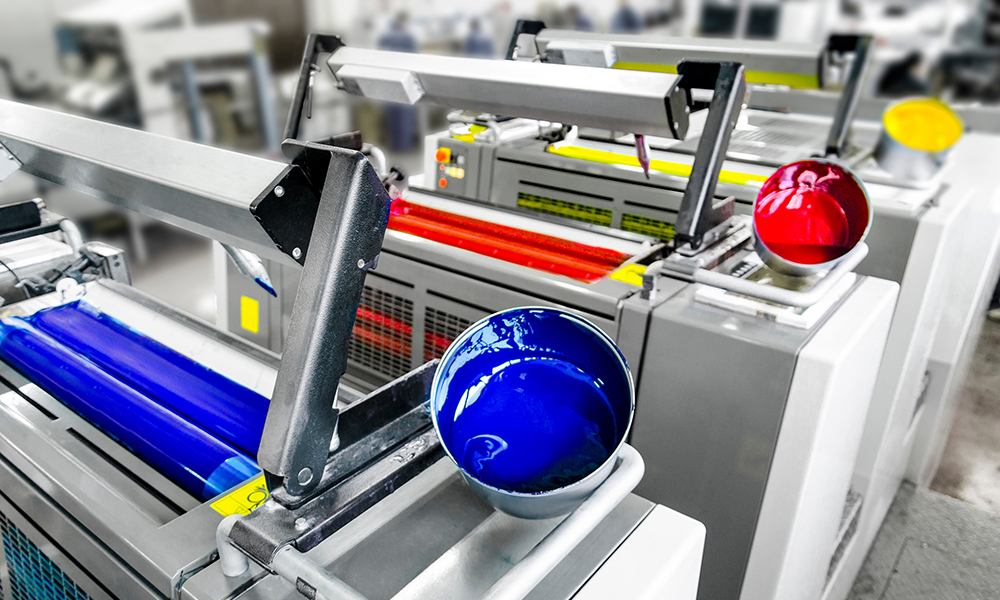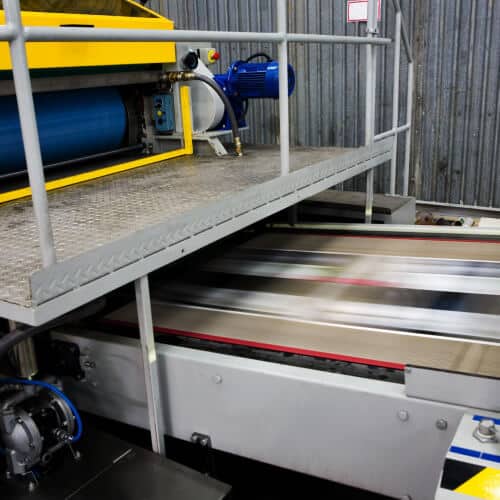The Vital Guide to Comprehending Litho Printing and Its Applications
Litho printing stands as a significant method in the printing market, rooted in the concepts of oil and water repulsion. This strategy not only provides top notch pictures however additionally caters to numerous business requirements. Its applications vary from advertising products to product packaging, showcasing its adaptability. As the sector adapts to brand-new innovations, the evolution of litho printing elevates questions concerning its future and relevance in a digital landscape. What lies ahead for this enduring approach?

What Is Litho Printing?
Litho printing, an extensively used printing method, relies on the concept of oil and water repulsion. This method employs a level printing surface area, typically a metal plate, which is dealt with to guarantee that the image areas are responsive to oil-based inks while the non-image areas repel them. The procedure begins with the development of a photo on the plate, often with illustration or photo means. Once the picture is prepared, home plate is moistened with water, complied with by the application of ink. The ink sticks just to the photo locations, permitting for accurate reproduction of graphics and message. Litho printing is preferred for its capability to produce premium prints with fine information and vivid shades. It is generally utilized in industrial applications, consisting of papers, magazines, and packaging, showcasing its versatility and effectiveness in meeting the needs of modern printing.
The Background of Lithography
Although lithography is a contemporary printing staple, its origins trace back to the late 18th century when German dramatist Alois Senefelder designed the technique in 1796. Created as a method for duplicating texts and images, lithography made use of a flat stone surface to develop prints with a chemical process. Senefelder's innovation enabled better versatility and artistic expression contrasted to previous printing methods.By the 19th century, lithography got extensive approval, coming to be a preferred selection amongst artists and publishers. It enabled the automation of images, maps, and posters, significantly impacting the printing industry. The technique better evolved with the intro of lithographic presses, boosting effectiveness and quality.As the commercial revolution advanced, lithography adjusted to meet the needs of industrial printing, leading the way for modern applications. Today, it stays an important strategy in numerous markets, including posting, packaging, and great art reproduction.
Just How Litho Printing Works
A key function of litho printing is its reliance on the concept of oil and water repulsion - litho printing. In this procedure, images are transferred from a level surface area, normally a metal or polymer plate, to paper. The plate is treated to ensure that the areas planned for printing attract ink, while the non-image areas repel it due to their affinity for water. The printing starts by wetting the plate with water, which abides by the non-image areas. Consequently, an oil-based ink is used, sticking just to the intended photo areas.When home plate enters into contact with the substratum, the ink is transferred, creating a print. The litho printing process is capable of creating top quality pictures with fine information. It is frequently used for mass production as a result of its performance and uniformity, making it a recommended technique for commercial printing applications
Advantages of Litho Printing
One remarkable benefit of litho printing is its ability to generate premium photos constantly, making it an optimal option for commercial jobs. This printing method makes use of a flat printing plate, making certain even ink distribution and sharp information. Litho printing is likewise renowned for its color accuracy, allowing lively and true-to-life recreations, which is necessary for branding materials.Moreover, it supports a wide range of substrates, consisting of paper, cardboard, and also specific plastics, enhancing its adaptability. The process is affordable for big runs, as economic climates of scale minimize per-unit prices. On top of that, litho printing has a quick turn-around time, allowing for reliable production schedules.Its sturdiness also implies that printed products resist fading, guaranteeing that the end product maintains its aesthetic allure gradually. Overall, these benefits make litho publishing a favored choice throughout various markets, contributing to its long-lasting appeal.
Applications of Litho Printing in Business
As services increasingly look for reliable and high-grade printing solutions, litho printing becomes a principal in numerous applications. This method is particularly favored for generating advertising and marketing products such as pamphlets, flyers, and directories, thanks to its ability to supply dynamic colors and sharp photos. In addition, litho printing is often employed for packaging solutions, allowing business to produce attractive labels and boxes that improve product appeal.In the sector of business identification, litho printing contributes in producing specialist stationery, calling card, and advertising product, which assist reinforce brand name acknowledgment. It is extensively utilized in the publishing industry for printed products such as books and magazines, where constant quality is extremely important. Generally, litho printing's convenience and performance make it a crucial tool for organizations intending to communicate effectively recommended you read and establish a solid market existence.
Artistic Use Litho Printing
Litho printing works as a versatile tool in the domain of printmaking, offering artists an one-of-a-kind approach to reveal their imagination. This strategy enables a variety of imaginative applications, from conventional prints to modern analyses. By discovering the nuances of litho printing, musicians can harness its unique qualities to boost their job.

Printmaking Techniques Overview
The virtuosity of printmaking incorporates a diverse variety of methods, with litho printing standing out for its special method to photo development. This approach relies upon the concept of oil and water repulsion, permitting artists to draw straight onto a limestone or steel plate with an oily tool. When prepared, home plate is moistened and inked, moving the picture onto paper through pressure. Litho printing is commemorated for its capacity to create fine details and rich tonal variants, making it a popular selection among musicians. Additionally, the process is flexible, suiting both traditional techniques and modern adaptations. This versatility enables litho printing to bridge numerous artistic designs, improving the printmaking landscape with its unique qualities and capacities.
Unique Artistic Applications
Exploring the unique imaginative applications of litho printing reveals its remarkable convenience in different creative areas. Artists use litho printing to create elaborate designs and textures, permitting meaningful and in-depth works. The process assists in the recreation of vivid colors, making it perfect for illustrations and fine art prints. Lots of modern artists accept lithography for its ability to combine standard techniques with modern-day concepts, leading to innovative artwork. Additionally, litho printing is frequently used in the production of minimal version prints, boosting their value and allure. The responsive high quality of litho prints includes a distinct measurement, attracting collectors and art fanatics alike. Overall, litho printing stays a significant medium for artistic expression, connecting classic approaches with contemporary creative thinking.
The Future of Litho Printing in a Digital World
As the printing industry progresses, litho printing faces the difficulty of integrating electronic modern technologies to remain pertinent. Methods concentrated on electronic assimilation, together with patterns in sustainability and advancement, will certainly form its future - litho printing. Comprehending these dynamics is important for market stakeholders wanting to adjust to a swiftly changing landscape
Digital Assimilation Techniques
A growing number of litho printing firms are welcoming digital combination techniques to remain competitive in a significantly digital landscape. By including electronic process, these companies can simplify processes and enhance performance. This assimilation enables for real-time information monitoring and enhanced communication between departments, minimizing turn-around times noticeably. Additionally, electronic tools enable better personalization and customization of published products, providing to certain customer demands. Firms are likewise embracing crossbreed printing solutions that integrate standard litho strategies with digital technologies, using adaptability in production. In official source addition, leveraging information analytics helps in recognizing market patterns and client preferences, allowing organizations to make educated decisions. In general, electronic assimilation is ending up being important for litho printing firms intending to innovate and react to progressing market demands.
Sustainability and Innovation Fads

Often Asked Concerns
What Products Are Generally Used in Litho Printing?
The materials frequently utilized in litho printing include light weight aluminum plates, ink, water, and paper. Each element plays a vital duty in the printing procedure, making sure high-quality picture reproduction and reliable transfer of ink onto the substratum.
How Does Litho Printing Contrast to Digital Printing?
Litho printing uses superior color uniformity and quality for big runs, while electronic printing masters brief runs and modification. Each technique has unique advantages, satisfying various demands based on manufacturing range and cost-efficiency.
What Is the Common Turn-around Time for Litho Printing Projects?
The normal turn-around time for litho printing tasks varies, generally varying from a few days to a number of weeks. Aspects affecting this duration include project complexity, amount, and called for finishing procedures, impacting overall production timetables.
Can Litho Printing Accommodate Personalized Sizes and Formats?
Litho printing can without a doubt accommodate custom sizes and formats, enabling for versatility in design. This flexibility allows clients to achieve one-of-a-kind print outcomes tailored to their specific requirements, enhancing the overall efficiency of their jobs.
What Are the Ecological Influences of Litho Printing?
The environmental impacts of litho printing consist of resource consumption, chemical usage, and waste generation. Advancements in lasting methods and environment-friendly materials are progressively decreasing these unfavorable impacts, promoting a much more eco liable technique to printing.